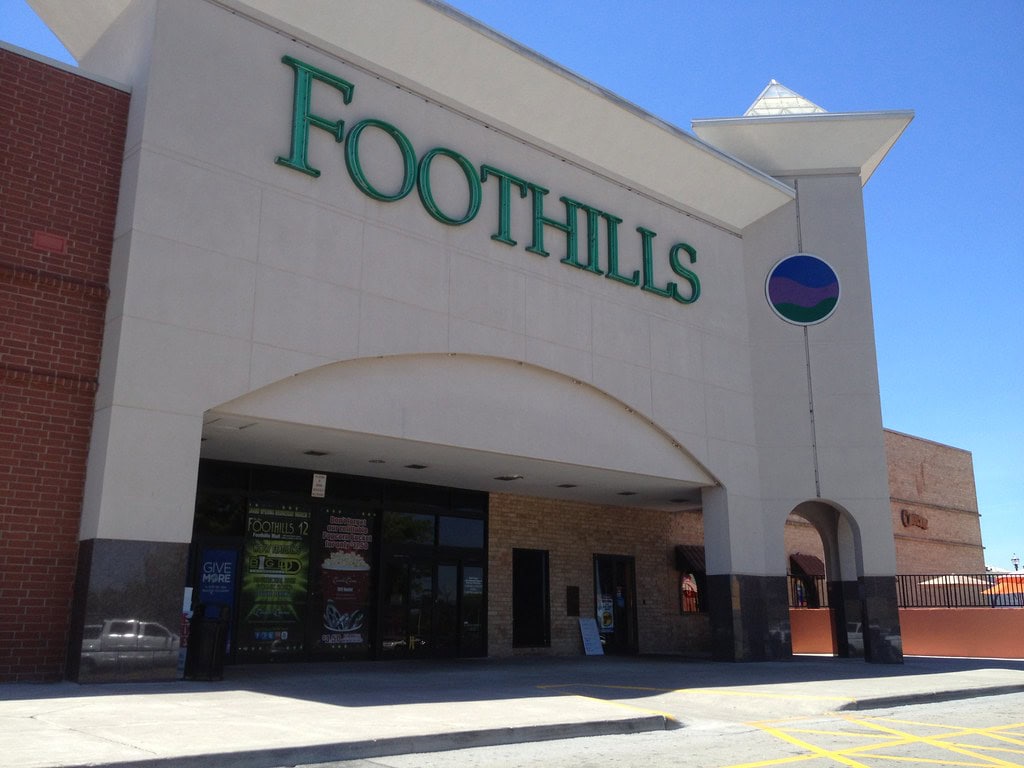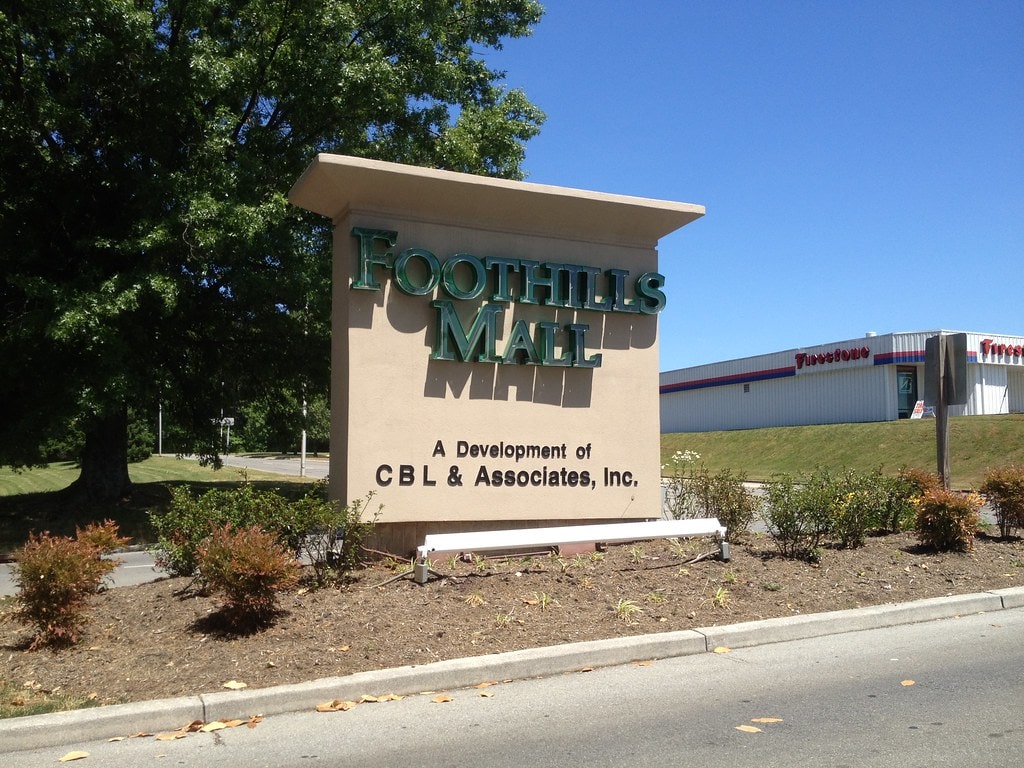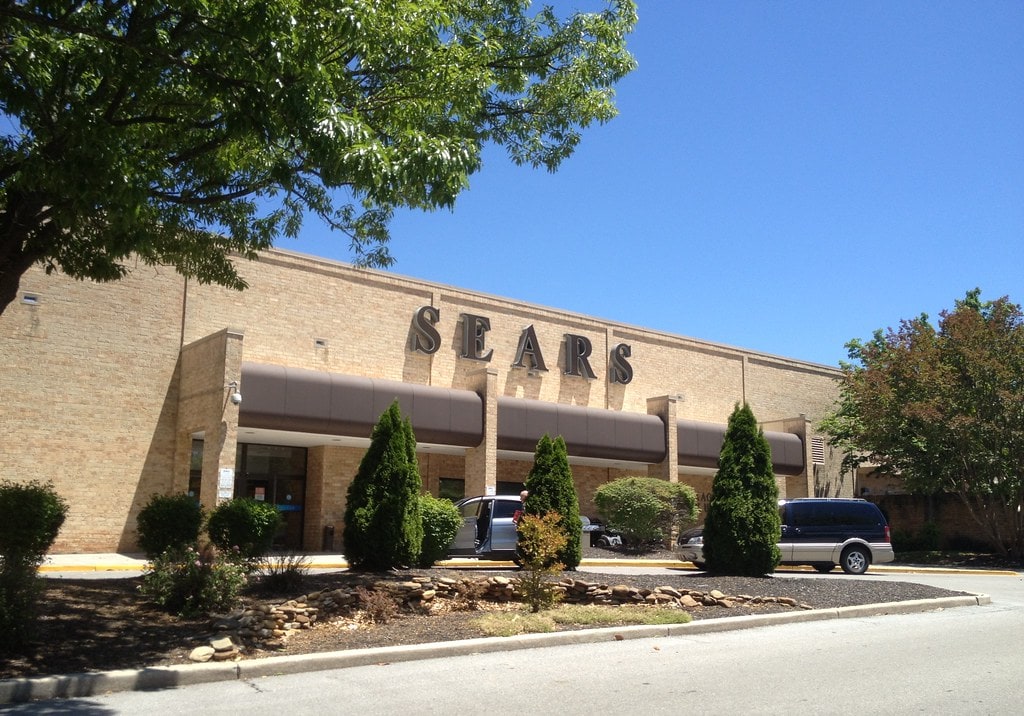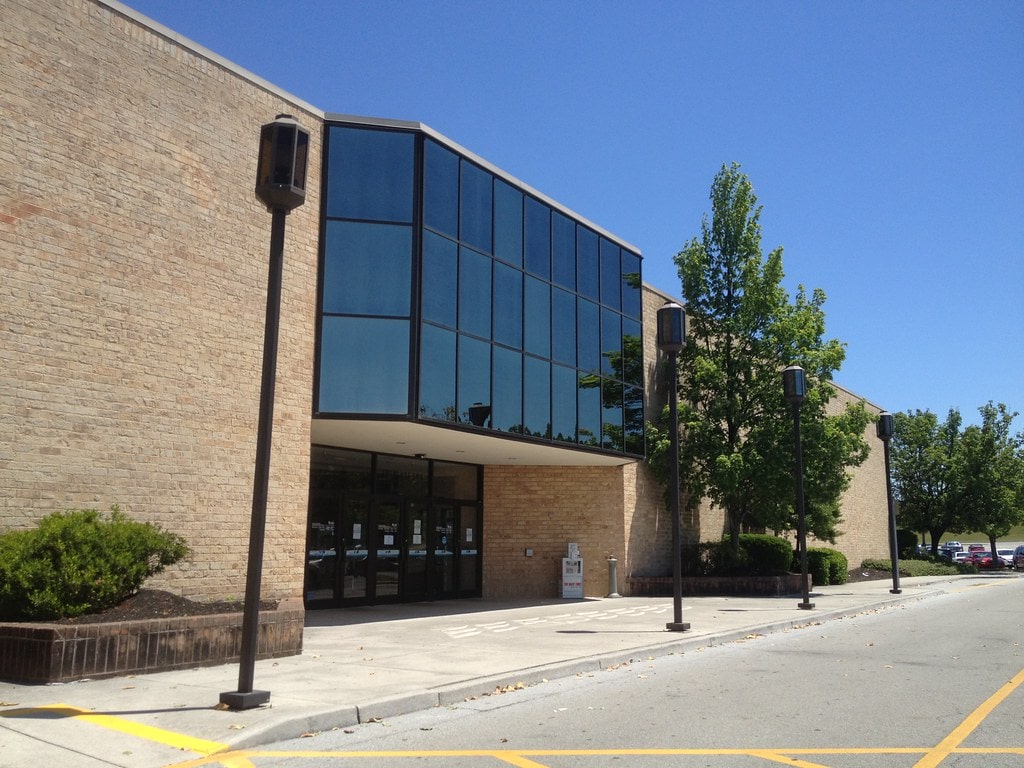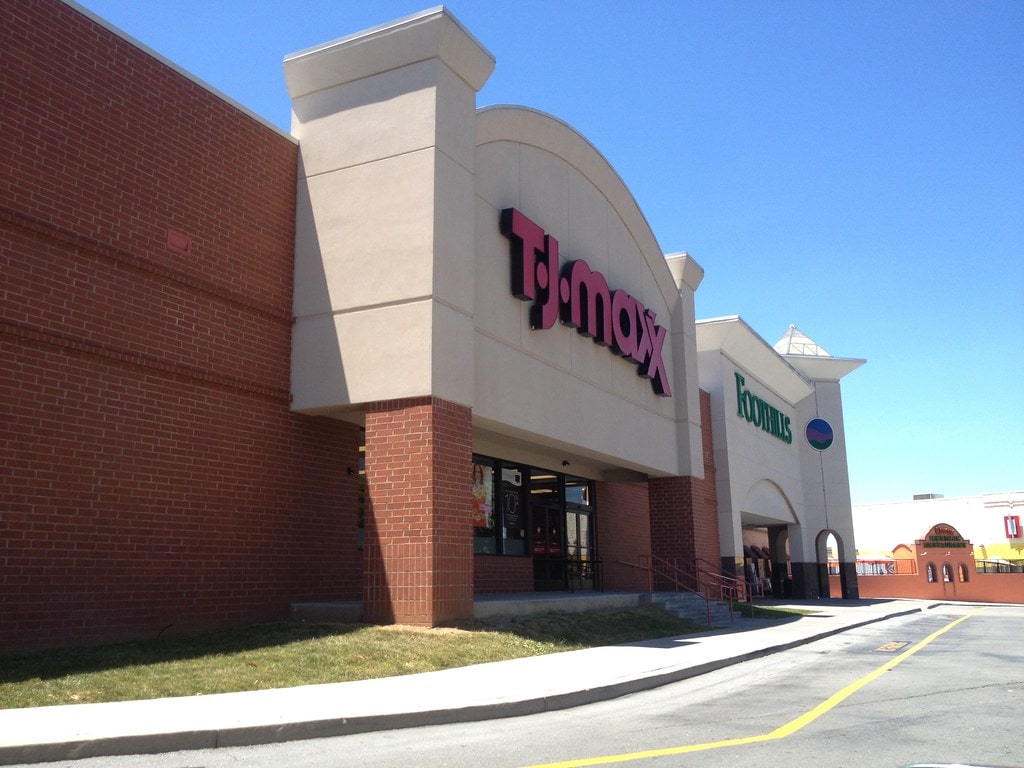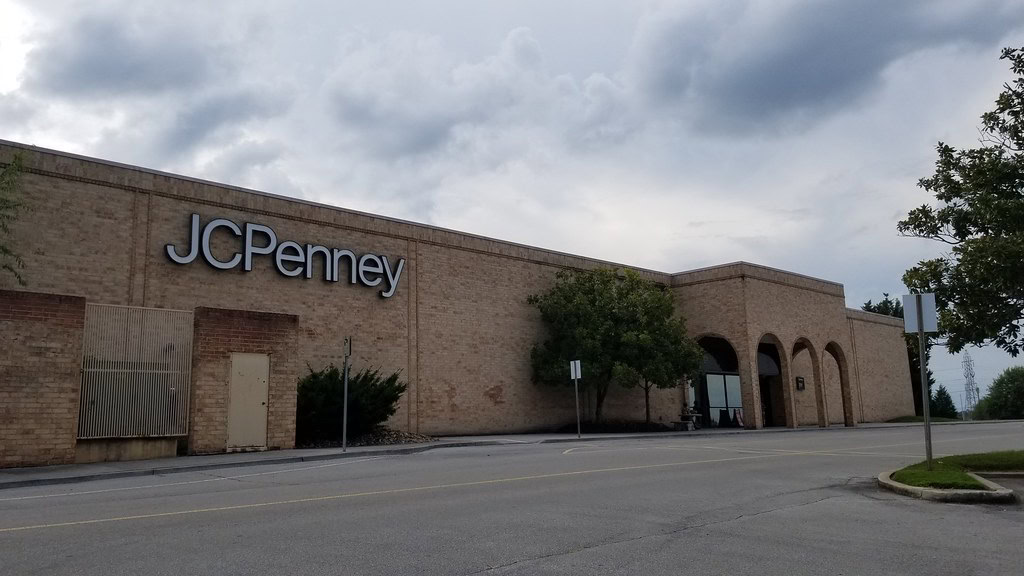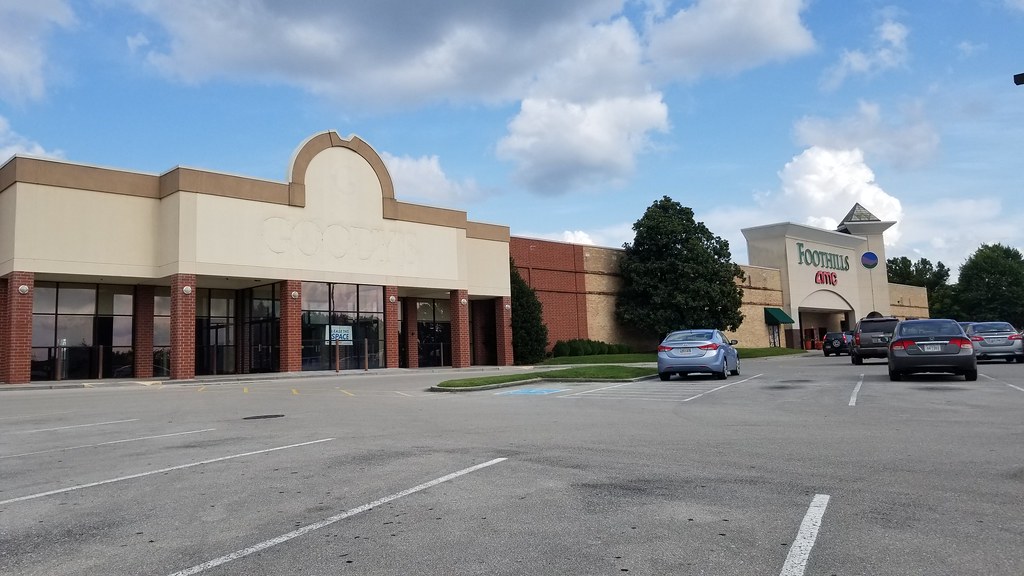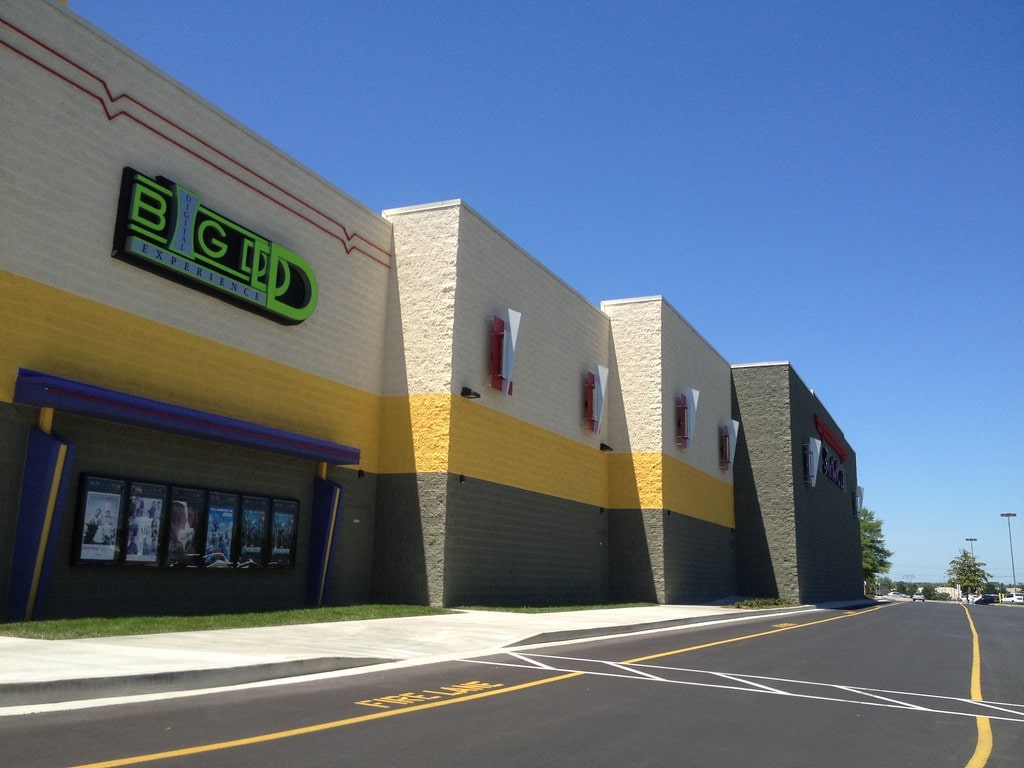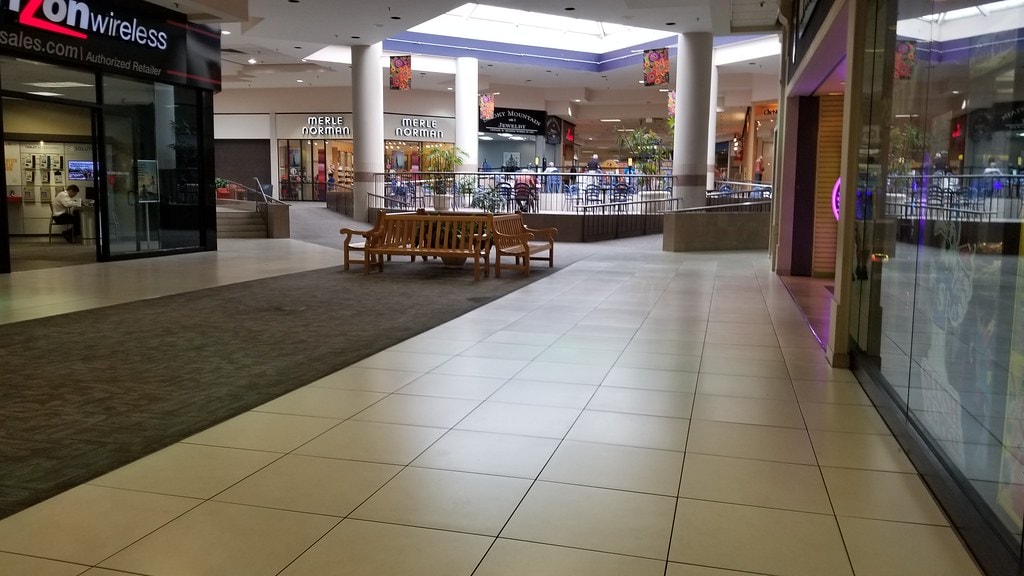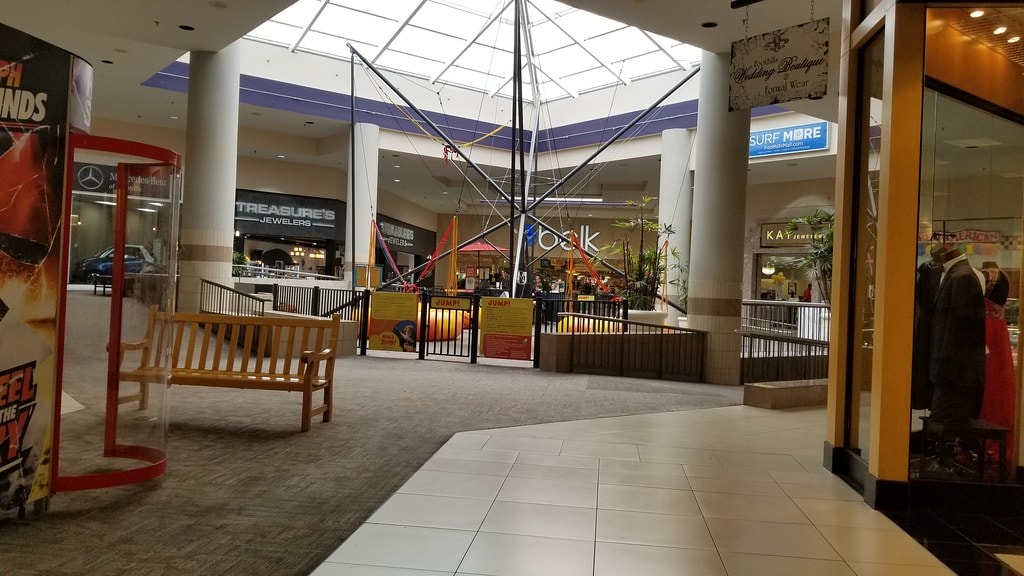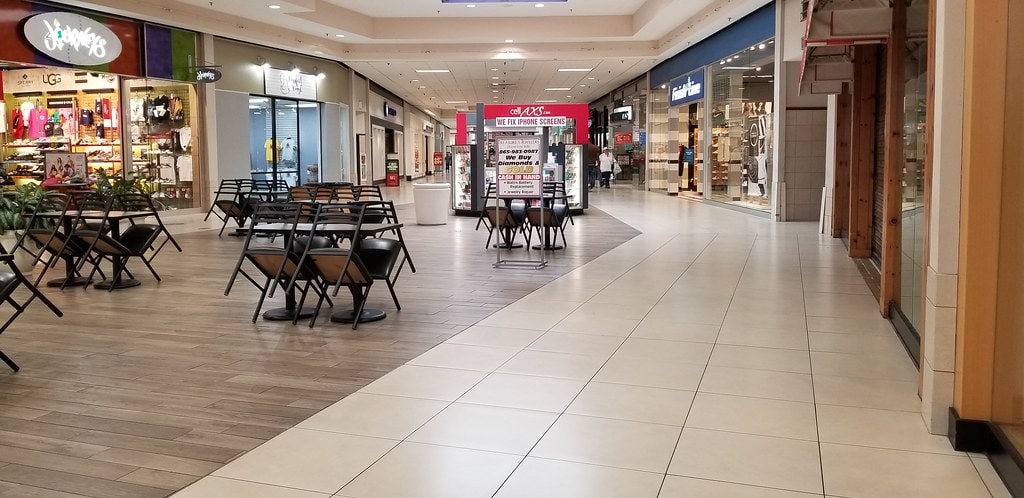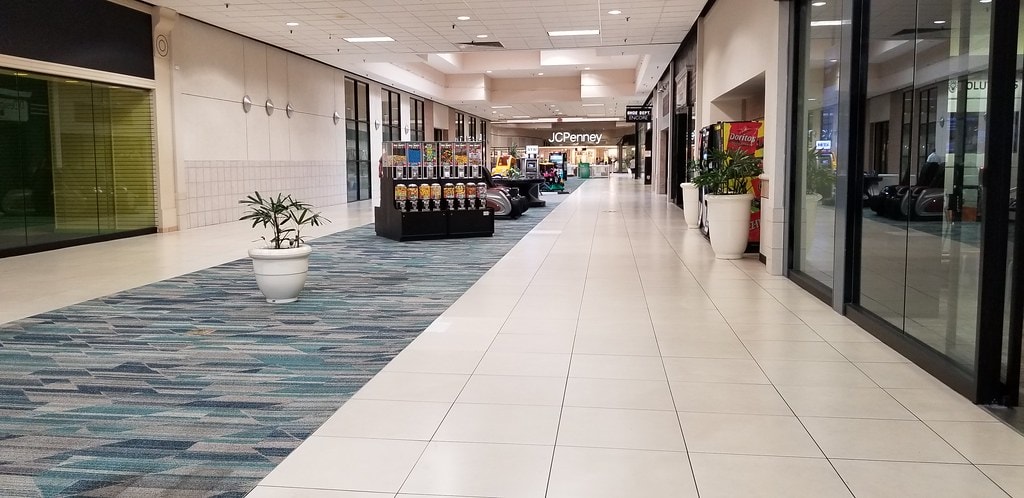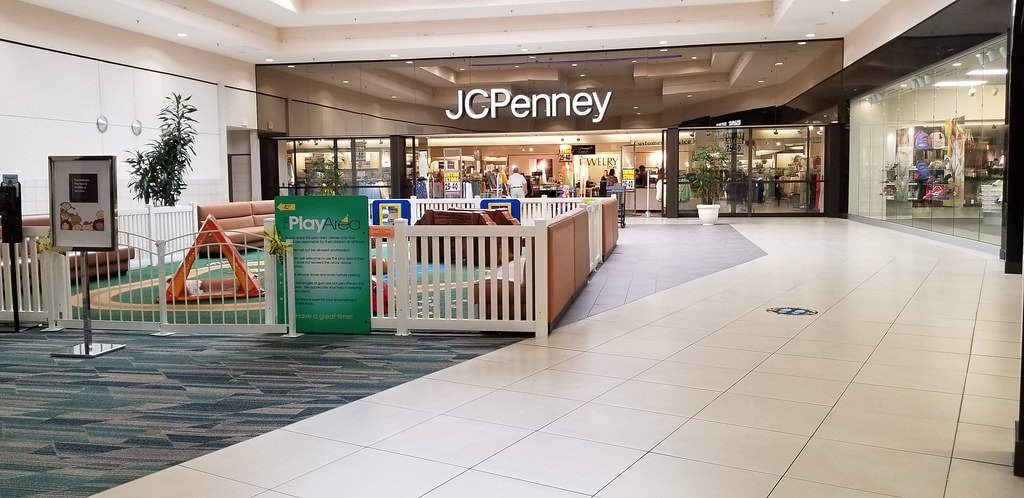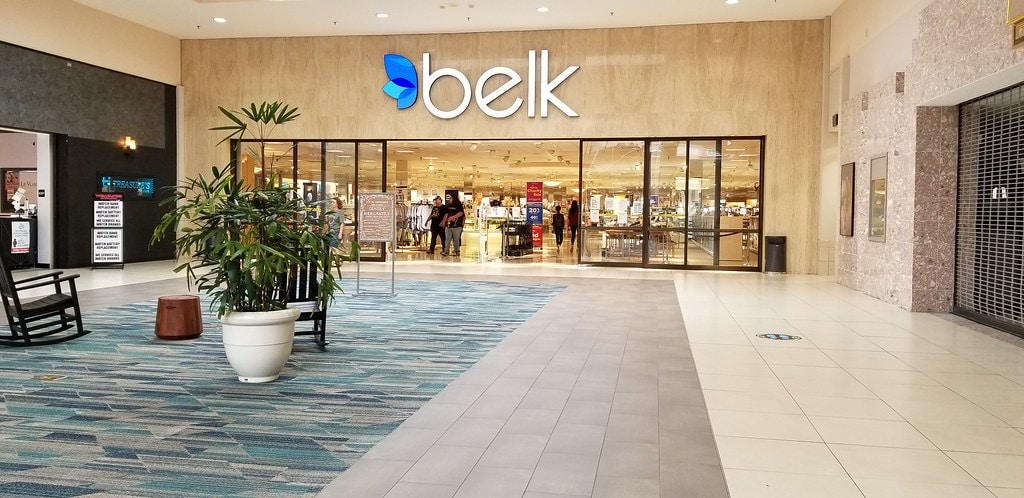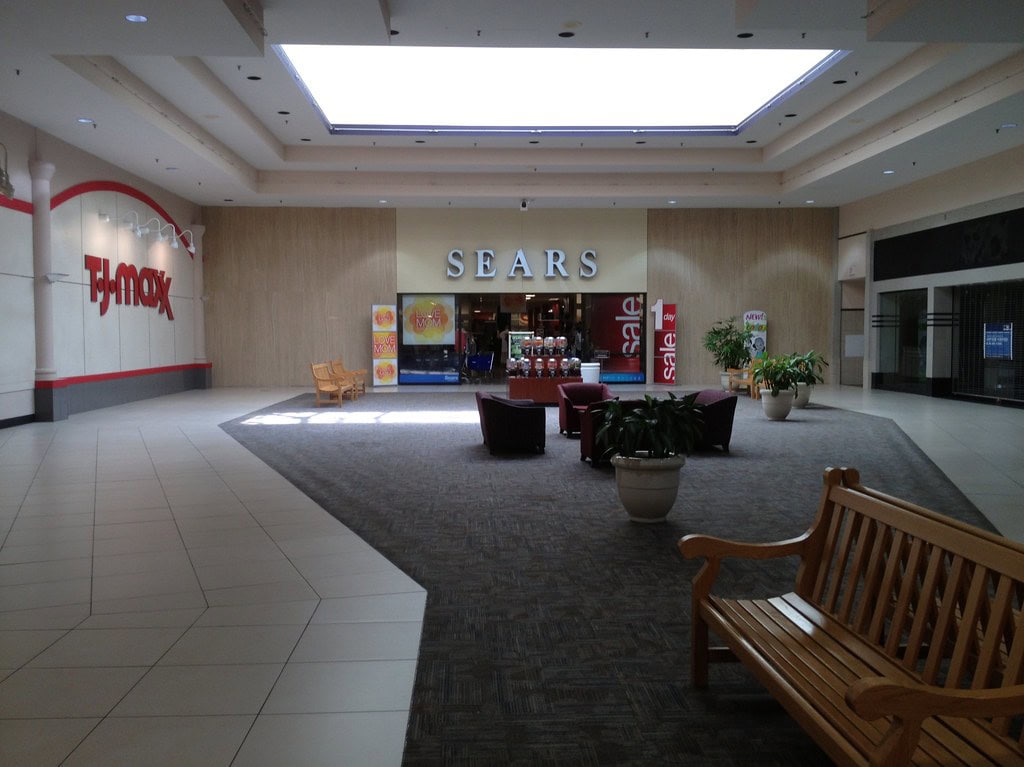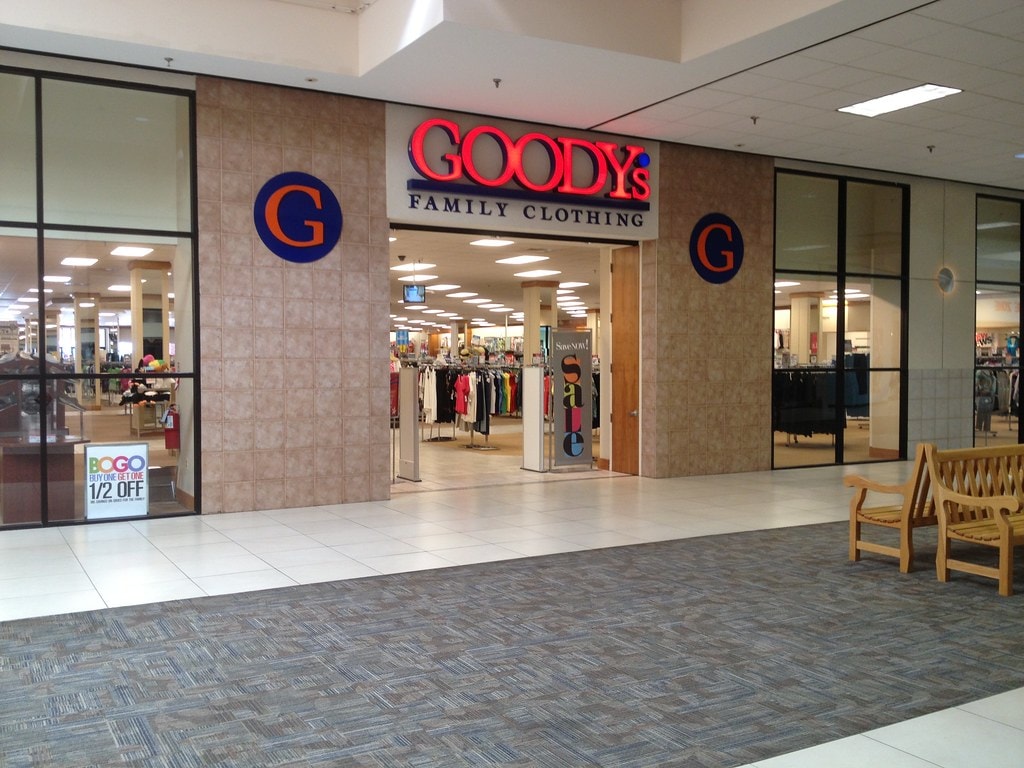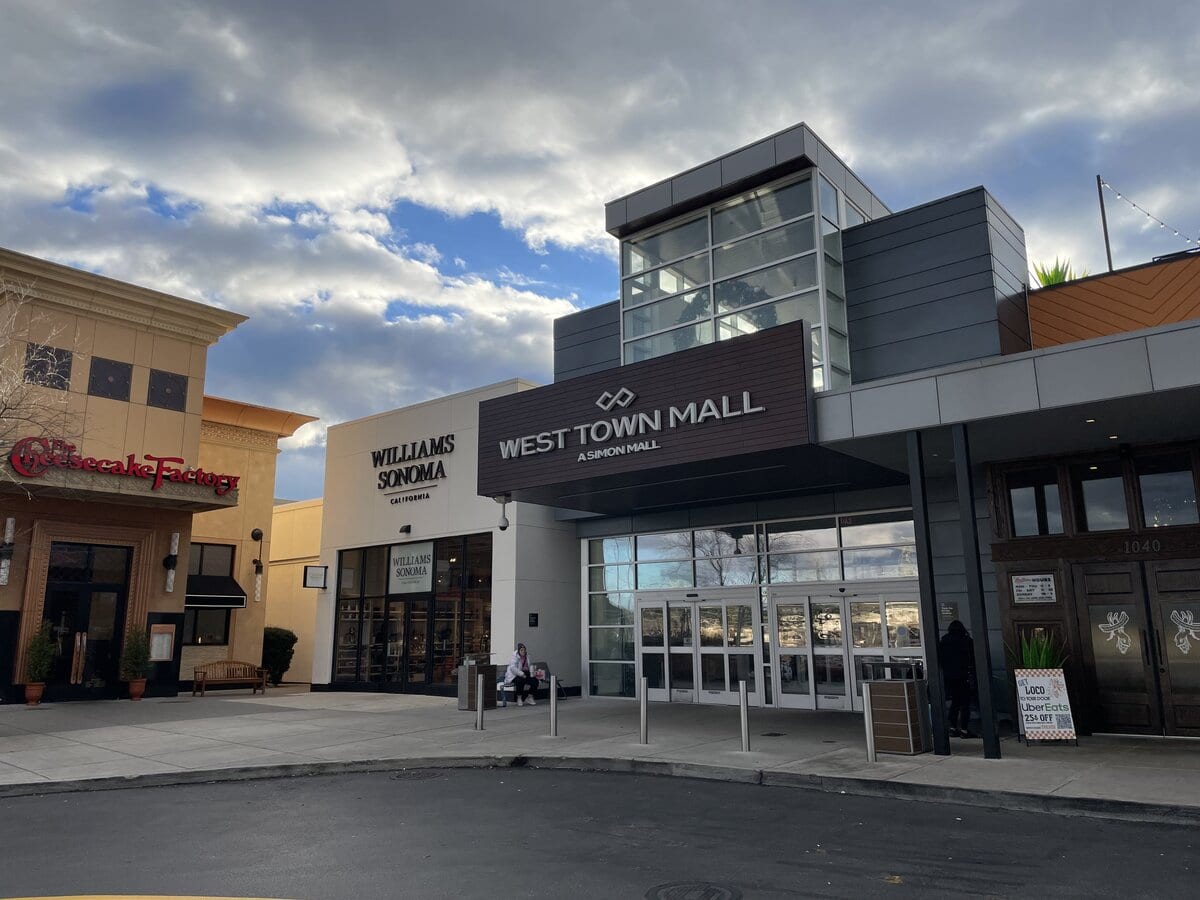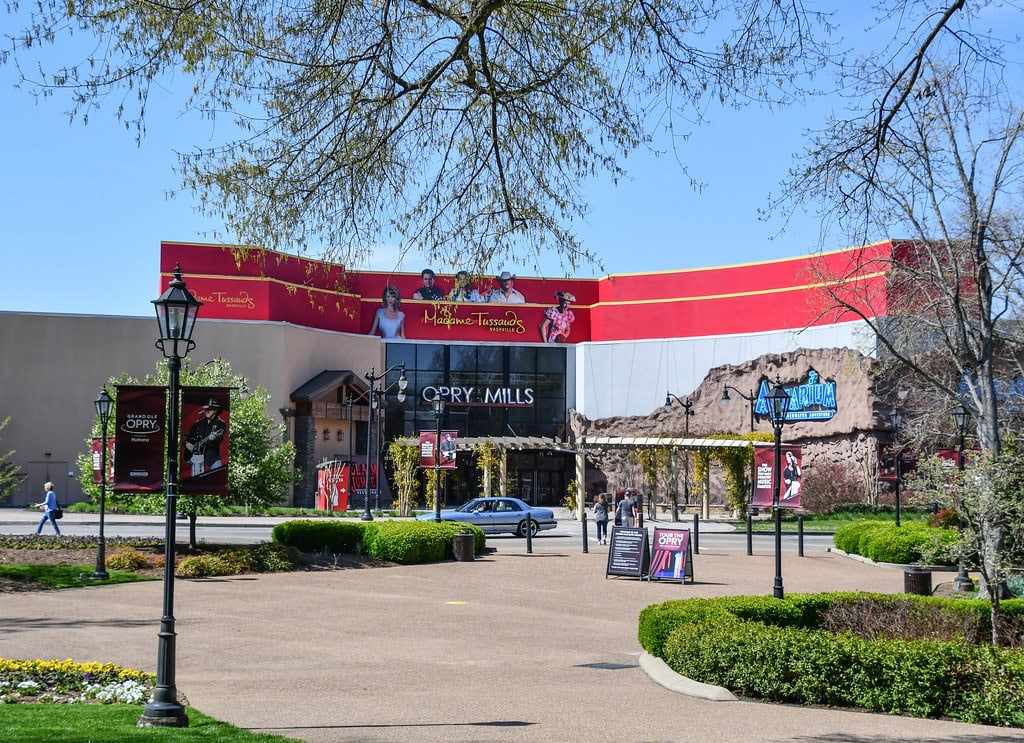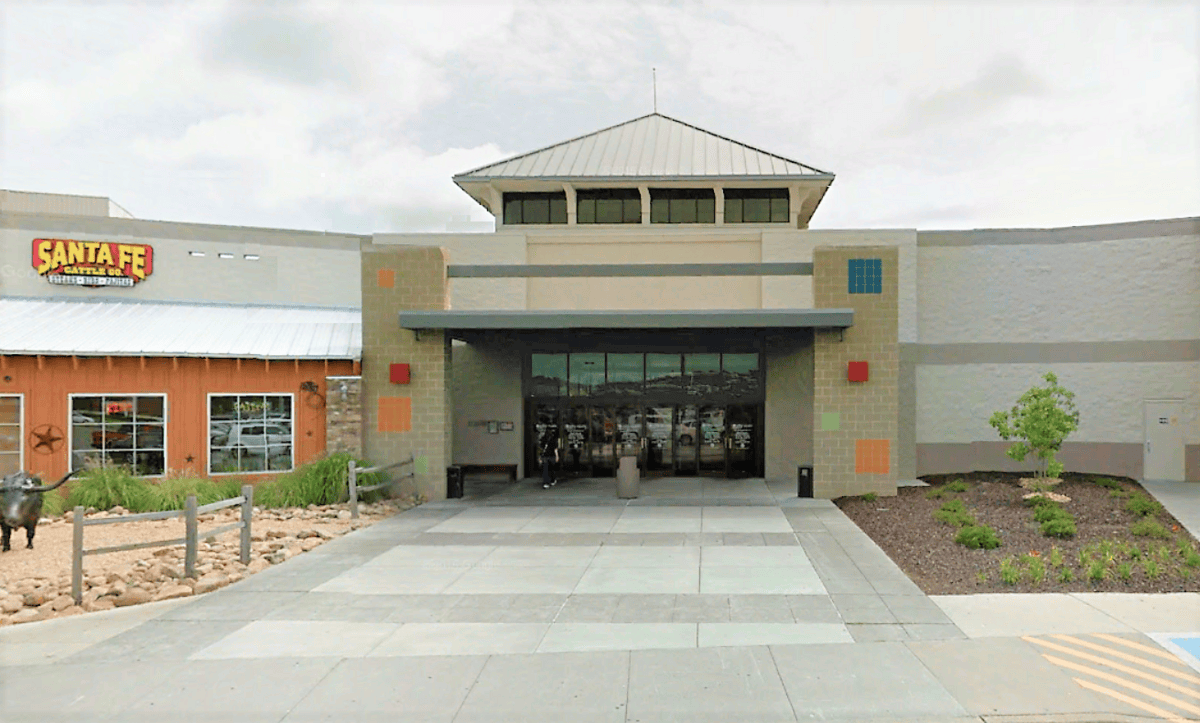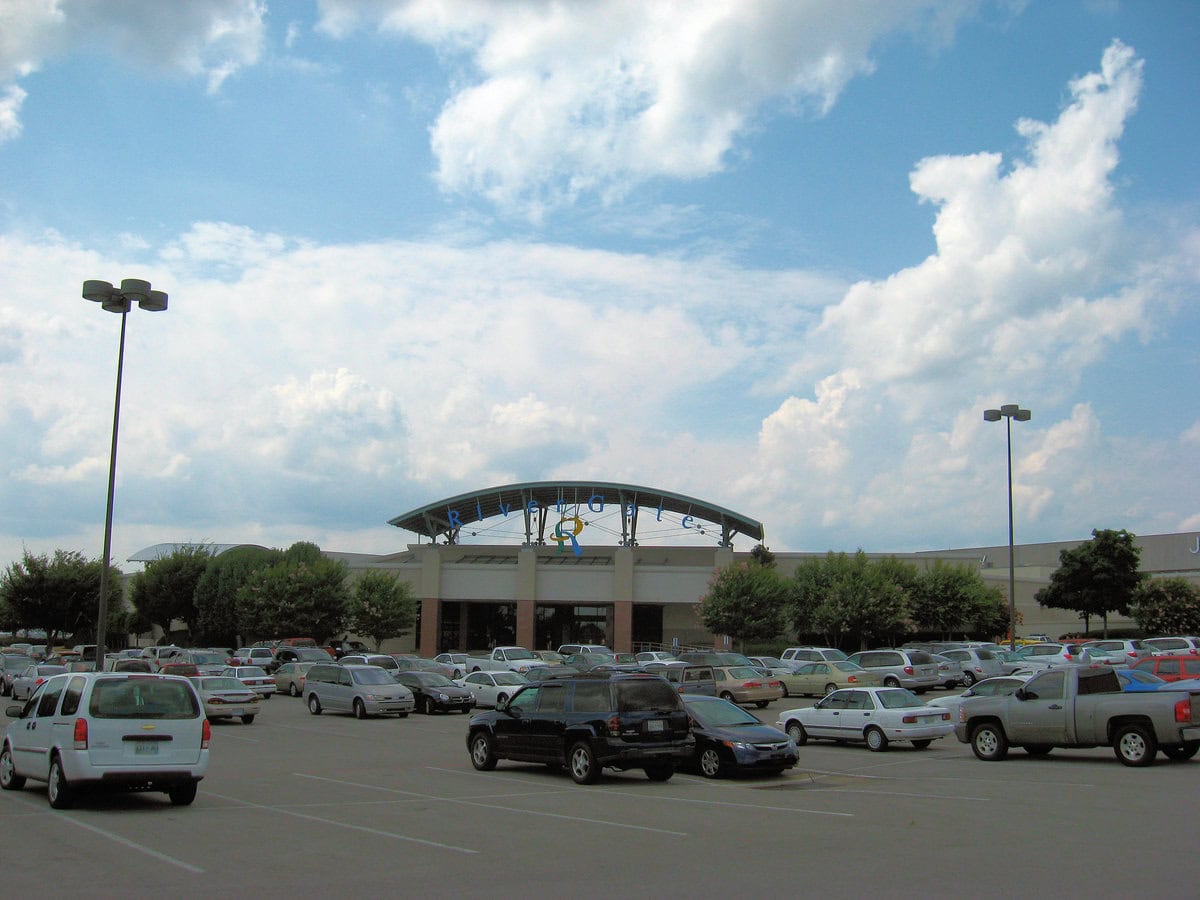Market Debut and Anchor Strategy
Foothills Mall opened in 1983 as a new retail center for Maryville, built around four major anchors: Proffitt's, Miller's, JCPenney, and Sears.
The project was developed by CBL & Associates and planned with a mix of department stores and smaller national chains spread across a single-level indoor layout.
Each anchor came with its own draw. Proffitt's was already well-known in the region and gave the mall a homegrown edge.
Miller's, then owned by Allied Stores, brought in a customer base familiar with its larger Tennessee footprint.
JCPenney and Sears rounded out the lineup, filling in softlines and appliances with brands people already trusted.
The property sat off US 129, US 321, and US 411, near the Kroger-anchored Foothills Plaza.
Early marketing tied both sites together, promoting shared parking, food options, and ease of access.
Construction wrapped before the holiday season that year. Stores opened with leased spaces already filled.
In a county that hadn't seen indoor mall development before, it created a new rhythm for shopping, errands, and foot traffic all in one place.
For a while, it became one of the default things to do in Maryville, Tennessee, especially on weekends, when the parking lot stayed full and JCPenney ran doorbuster ads in the local paper.
Tenant Churn and Spatial Conversions
By the early 1990s, Foothills Mall had already started shifting its floor plan. Miller's closed in 1992.
In its place, Proffitt's took over the space to run a second store under the same name.
For about a decade, both Proffitt's storefronts operated simultaneously - one focused on women's apparel and accessories, the other stocking men's and home goods.
It was a short-term solution, but it filled the vacancy fast.
Elsewhere in the mall, smaller attractions cycled through. ShowBiz Pizza Place opened in March 1983 and stayed active until the early '90s.
By 1991, the space had rebranded to Chuck E. Cheese, then closed entirely in 1995.
Workout Anytime eventually moved in, taking over the old animatronic stage and arcade layout.
In 2006, Proffitt's was acquired by Belk. The Belk name replaced the original branding, but only one of the two spaces remained in use.
The former Miller's side sat dark for a time before being demolished in 2011.
That teardown cleared the way for a new AMC Theatres structure, a rare case where a movie chain built from the ground up instead of renovating what was there.
The mall also underwent a renovation in 2006.
New flooring, neutral signage, and brighter interior lighting softened the visual wear that had settled in over two decades.
It wasn't a full overhaul, but it pushed the building back toward lease-ready.
By then, JCPenney and Sears were still operating, but several mid-size tenants had started exiting.
Chains like Goody's and Kirkland's cycled through, along with seasonal concepts that filled short-term gaps.
The tenant map changed more often. And anchors, while still intact, no longer carried the same draw they had in the early years.
Leasing Terms and Property Shifts
Time Equities Inc. took over Foothills Mall in 2017. The sale wasn't flashy, and it didn't come with promises.
The new owners inherited aging tile, shrinking tenant lists, and empty space where customers used to line up for doorbusters.
Some leases held steady. Belk and TJ Maxx stayed open. Workout Anytime kept its corner.
But other spots cycled fast - one unit might house a Halloween store in October and sit dark by New Year's.
Anchor Losses and Redevelopment Gambits
Sears closed its doors in February 2019, leaving one of the mall's largest floor plates vacant.
For a time, the space sat behind locked glass while developers looked for new tenants.
The structure was eventually demolished. In its place, a Publix Supermarket opened in fall 2023.
JCPenney followed next. On June 4, 2020, the company announced that it would shutter 154 locations nationwide.
The Maryville store was on that list. By October 2020, the lights were off and the gates were pulled down.
In the years that followed, those two closures cut the original four anchors in half.
Only Belk and TJ Maxx remained.
TJ Maxx had opened in the early 2000s inside a repurposed section of the Sears wing, and it stayed open even after the rest of that corridor went dark.
The empty JCPenney building lingered for a few years. In early 2024, demolition began on the site.
BJ's Wholesale Club took over the redevelopment. They built an entirely new structure on the footprint, adding a gas station and an auto center.
BJ's opened its fueling station on January 9, 2025, followed by the full store on January 17.
It marked the first BJ's location in East Tennessee. That detail became part of the marketing push, both in-store signage and in regional media.
BJ's didn't just replace an anchor.
It redefined the corner of the property with a separate entrance, dedicated parking lot, and branded infrastructure that barely nodded to the mall behind it.
Water Breaks, Police Tape, and Tenant Turnover
On October 30, 2024, a water main snapped inside Foothills Mall.
By midmorning, half the stores had no running water. City repair crews came out. Temporary signs went up.
The problem didn't last long, and it was fixed before nightfall.
In February 2025, the realtors posted about a 2.1-acre outparcel for sale near the mall entrance on Instagram that same month.
Then, in March 2025, police chased a stolen car across town. The driver turned into the Foothills Mall lot.
Officers caught both teenagers behind the wheel - kids who had taken the vehicle from a military school in Kentucky.
The mall went into lockdown. Within an hour, police had cleared the scene. The mall reopened that afternoon.
No one got hurt. Still, the incident made the local news, and footage from the chase replayed on regional TV.
In May 2025, Foothills Mall added a different kind of tenant to its lineup.
Van Gogh: The Immersive Experience opened in unit 30, bringing 360-degree projections, surround sound, and a virtual reality tour of the artist's work.
The exhibit took over more than 12,000 square feet and operated as a ticketed attraction with its own schedule and entry point.
Visitors could move between animated walls of color and quieter VR scenes like the "Bedroom in Arles."
In July 2025, five new store leases were signed. Gracefully Southern Boutique and The Egyptian Taste were two of them.
Tenant Mix and Mall Layout in 2025
By mid-2025, Foothills Mall had shifted into a patchwork of anchors and small-format stores, with national chains holding the outer edges.
Publix took the spot where Sears once stood. BJ's Wholesale Club replaced the old JCPenney. Both had their own entrances, parking zones, and hours.
Inside the mall, TJ Maxx and Belk remained open. Farmer's Home Furniture operated from a large space near the AMC entrance.
AMC Foothills 12 showed first-run films, though some screens stayed dark during weekdays.
The mall's interior directory listed fewer recognizable brands than in earlier years.
Most inline tenants were either local retailers or small service businesses.
The property still opened daily. Directory maps were updated. But retail momentum came from the big-box anchors.
The main mall served more as a connection point than a destination.

